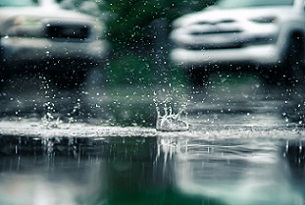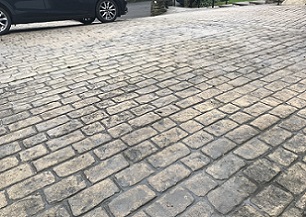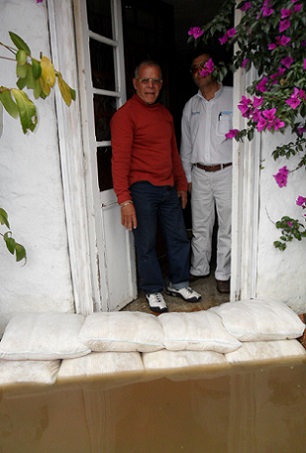 Rainwater flooding a driveway. Photo by Mitchell Griest on free photo website Unsplash.
Rainwater flooding a driveway. Photo by Mitchell Griest on free photo website Unsplash.
 Car on a patterned imprinted concrete drive
Car on a patterned imprinted concrete drive
 FloodSax alternative sandbags protecting a home
FloodSax alternative sandbags protecting a home
How the growth in electric car sales could lead to more urban flooding
The increase in people buying electric cars could ironically lead to more flooding in the future.
With a quarter of all gardens now paved, tarmaced or concreted over UK-wide, the risk of urban flooding has increased dramatically.
Leeds City Council has voiced fears that more and more people are paving over their gardens to install electric charging points for their cars.
But this means with no grass or earth for rainwater to soak into, it could lead to more flooding in suburbs across the UK in a phenomena that’s known as ‘urban creep.’
The council is now warning people that even though they may have not been flooded in the past, they may well fall victim to it in the future.
The council has started a campaign called Don’t Pave It, Save It to encourage people to think about the environment and their impact on flood risk when renovating their front garden or driveway.
The council states: “Green spaces act as natural sponges, soaking up water and helping to keep it from entering our homes. The creation of more natural flood management will assist our efforts to reduce flood risk.
“As you only need planning permission to pave over your front garden in specific circumstances, ultimately the choice is with homeowners and we understand that people need a place to park and charge electric vehicles and some would prefer not to maintain a demanding garden, but we hope that our guide can help to encourage everyone to make a green choice that still meets their needs.
“Front gardens of all sizes affect how attractive our roads and streets look, where rainwater drains to and can protect and support local wildlife. They can help tackle climate change by capturing carbon and helping to deal with hotter and wetter weather.”
Clr Helen Hayden, Leeds City Council’s Executive member for Infrastructure and Climate, said: “COP26 has showcased just how important it is to take action against climate change. As with many actions that we take to prevent damaging climate change, the actions of the individual might not seem important, but gardens make up about half of our urban greenspaces so if everyone does their bit then it can add up to huge results for everyone.”
The council warns people that the risk of flooding is ever present, adding: “You could still be at risk of flooding even if your area has not flooded in the past. If you live in a flood risk area it’s important to plan ahead so you’re prepared for flooding. This will help reduce the damage caused by flooding.”
And the council makes it clear people are responsible for their own flood protection, adding: “Buy or make your own flood barriers to stop water from entering your home or business. These can be kept until there is a risk of flooding.”
Councils have no responsibility to provide sandbags and the Environment Agency has also warned people they are responsible for their own flood protection.
The Environment Agency states: “Don’t assume the authorities will provide you with sandbags in a flood emergency. It’s the responsibility of property owners to take appropriate action to protect their property from flooding. Sandbags are relatively ineffective when compared to purpose-built flood protection products. We strongly encourage people to use these products.”
One of the best known and most widely used flood protection, mitigation and prevention products are FloodSax alternative sandbags. Some councils now realise that FloodSax are so versatile - space-saving to store and quick and easy to deploy - that they recommend them for flood management, flood resilience and flood control.
Leeds City Council has published a web page with information on the benefits of a green front garden, as well as a range of ideas for how to create a space that allows off street parking and a space for charging electric vehicles, but is also environmentally friendly, aesthetically pleasing and low maintenance while reducing flood risk.
Ideas include using permeable or porous materials like asphalt or gravel, planting hardy low-growing plants between wheel tracks on driveways, using hedges instead of fences or installing raised planters.
To read more go to https://www.leeds.gov.uk/planning/planning-policy/supplementary-planning-documents-and-guidance/your-front-garden-design-guide